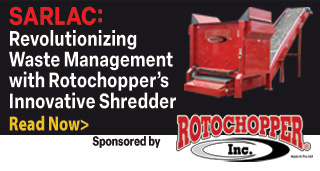Waste Management refers to the collection, transportation and disposal of human waste products. It can also refer to the monitoring and management of waste. The overall intention of waste management is to reduce the effects of waste on our health and the environment and to make sure our neighborhoods continue to be aesthetically pleasing.
Waste Management also focuses on waste recovery with the goal of delaying the rate of consumption of natural resources. “Waste materials” include solid, liquid, gaseous, and radioactive substances.
Three Methods of Waste Disposal
Landfill
Most countries maintain a landfill system for waste disposal which is all about burying the waste. Historically, landfills were set up in unused quarries, mining voids or borrow pits.
It is important to have a well designed and properly managed landfill because poorly designed or poorly managed landfills can create a number of unfavorable environmental problems including wind-blown litter, attraction of vermin, and undesirable substances leaking into the ground.
As organic waste breaks down, it produces gases like methane and carbon dioxide. These gases kill surface vegetation and create odor problems. Most modern landfills have ways of handling the possibility of wind-blown litter and vermin attraction. They also have ways of dealing with gases.
Incineration
Since an Incineration facility does not require as much area as landfills, this process of waste disposal is used more commonly in countries with less land available. Incinerators convert waste materials into heat, gas, steam and ash thus reducing the volumes of solid waste to 20 to 30 percent of the beginning volume.
Facilities that burn waste to generate heat steam or electricity us terms like waste-to-energy (WtE) or energy-from-waste(EfW.)
Incineration is accepted as a useful method of disposing of biological medical waste. Even so, Incineration remains a controversial method of waste disposal because of issues like emission of gaseous pollutants. Incinerator combustion doesn’t always work as planned so there are concerns about pollutants in gaseous emissions from incinerator stacks. These gases may have serious environmental impacts.
Recycling
Recycling refers to the collection and reuse of waste materials. Potential recycling materials (like empty plastic water bottles) can be reprocessed into new products. Recycling items are commonly collected separately from general waste with the use of color coded bins. There are also separate recycling trucks used to collect recycling items.
Consumer products that are the most commonly reprocessed include aluminum, polyethylene and PET bottles, glass products like bottles and jars, cardboard, newspapers, magazines and corrugated fiberboard boxes.
Cities and Countries have their own unique list of the types of materials they will accept for recycling. They also have unique recycling programs and facilities that can handle the types of materials they accept.
We sell a variety of different recycling equipment, recycling trucks, landfill equipment and transfer station equipment our MarketPlace.







